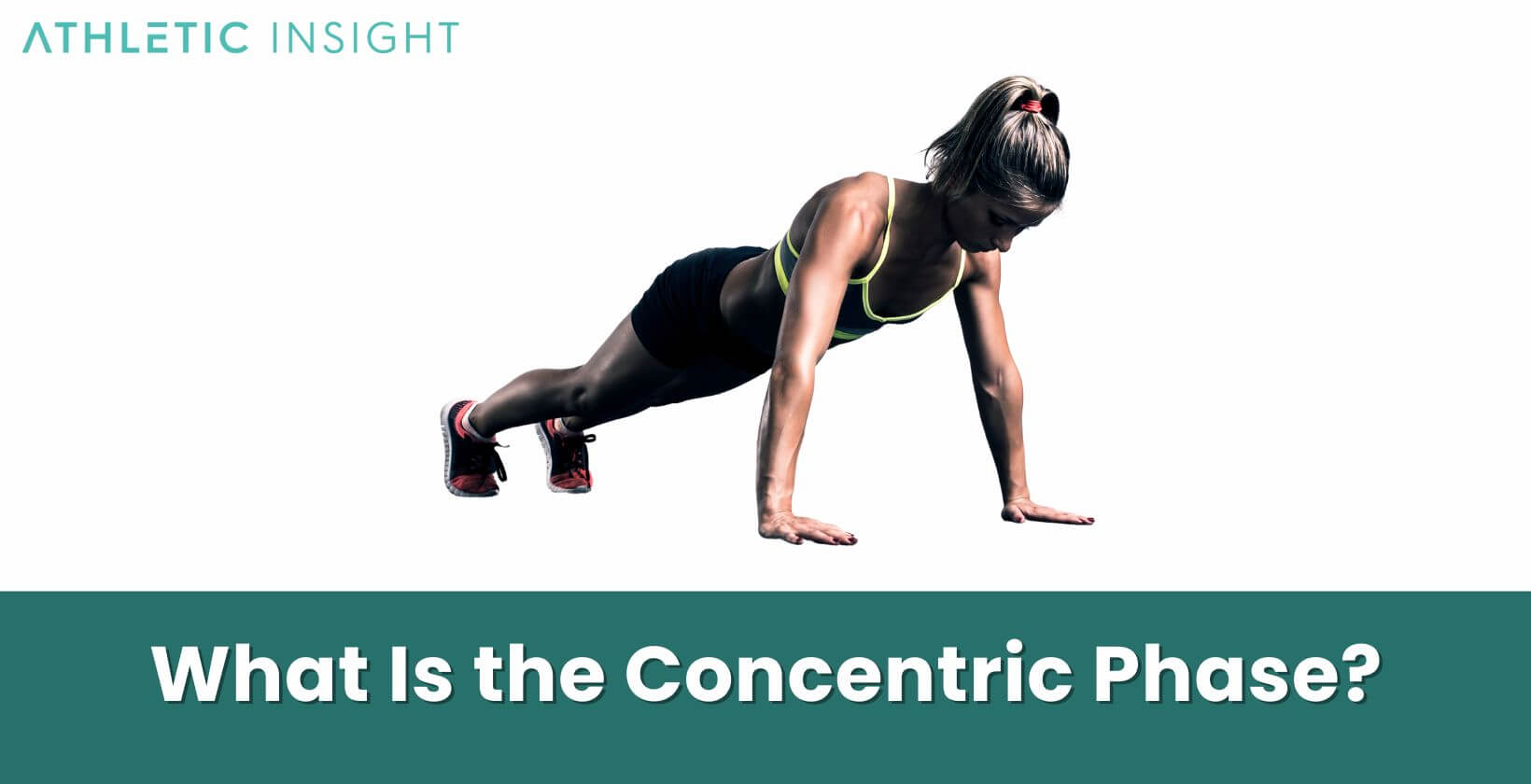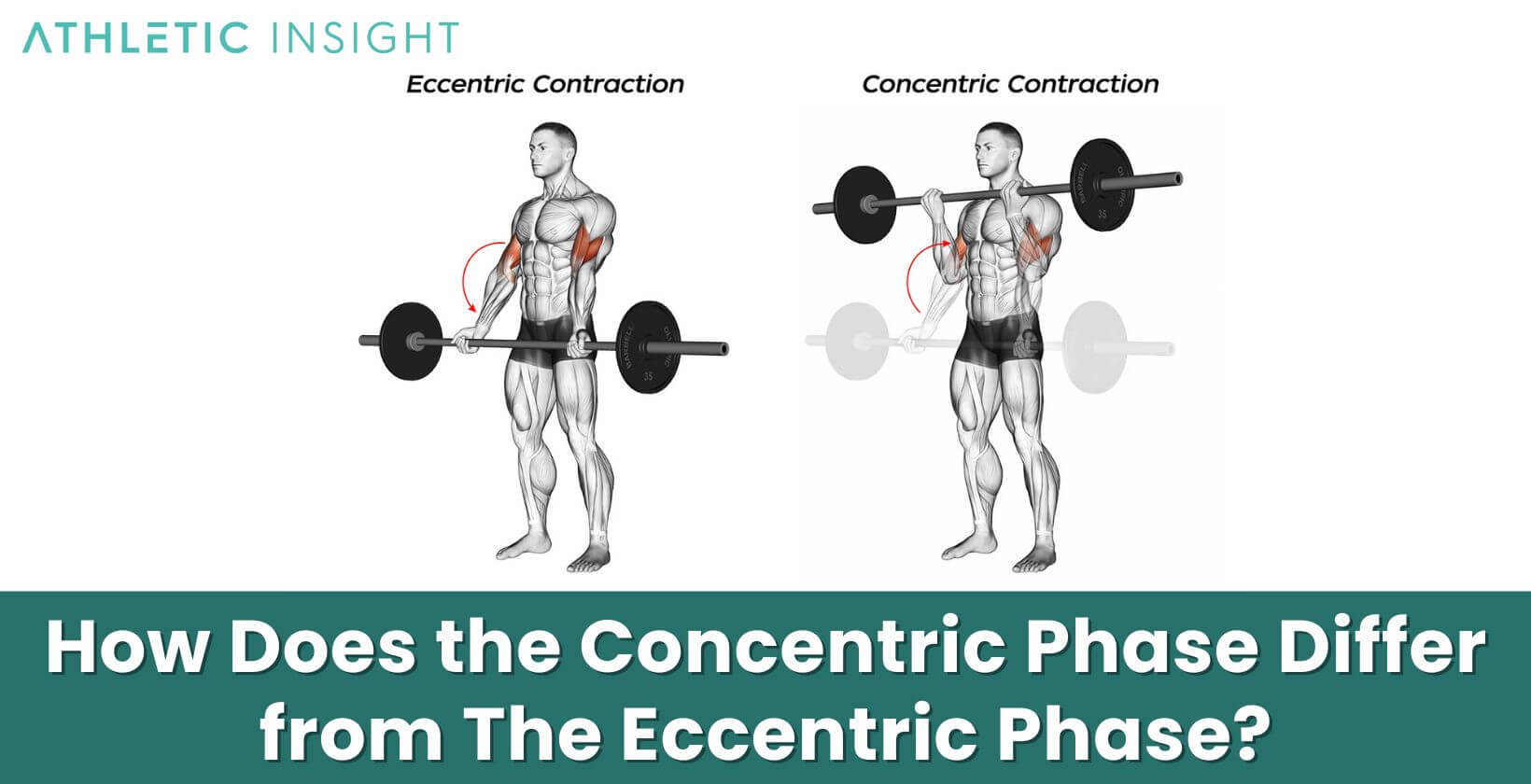The concentric phase, a term central to exercise physiology, refers to the period in which muscles engage in a concentric action, causing them to contract and shorten. This concept can be illustrated by the concentric phase of a squat. As you rise from a squatting position, your muscles, particularly the quadriceps, undergo a concentric contraction, helping you stand upright. This action is a clear representation of the concentric definition within movement dynamics.
Many exercises and daily activities involve concentric muscle contractions. From the upward lift in a bicep curl to the force exerted to push open a door, the concentric phase is fundamental to understanding types of muscle actions. When pondering, “Which of the following is an example of a concentric contraction?”, one might reflect on instances where muscle shortening actively produces or supports movement.
When individuals participate in exercises, understanding the concentric phase’s mechanics and implications can optimize performance and outcomes. This phase is a key component in muscle development and is instrumental in many exercises aiming for strength and endurance. The following sections shed light on its definition, importance, and the benefits it offers.
What Is the Concentric Phase?
The concentric phase is defined as the period during a muscle’s action when it contracts and undergoes shortening. Imagine lifting a heavy object off the ground; as this action occurs, specific muscles contract and reduce in length to provide the necessary force for the lift. This phase signifies the muscle’s active response to resistance, striving to meet and overcome the challenge presented.

Such muscle action is pivotal in exercises where the goal is to overcome some form of resistance. Whether that resistance comes from external weights, resistance bands, or body weight, the concentric phase ensures that the muscle contracts effectively to facilitate the desired movement.
What Occurs During the Concentric Phase?
Using the concentric phase of a squat as a focal point helps elucidate this concept. When rising from a squat position, the muscles involved, especially the quadriceps, contract and undergo shortening. This action is instrumental in lifting the body to an upright position. During this movement, the quadriceps and gluteal muscles actively shorten to counter the body’s weight and the force of gravity.
This muscle shortening is crucial as it provides the force required to complete the movement. The resistance presented by the body’s weight and gravity necessitates an opposing force, which is furnished by the contracting muscles during the concentric phase.
What Is the Importance of Concentric Phase?
The importance of the concentric phase cannot be understated in the realm of physical exercise. As muscles contract during this phase, they generate the necessary force to overcome external resistance. This active shortening and production of force play a pivotal role in strength development. Without the concentric action, muscles wouldn’t be able to generate the power needed to lift weights, push against resistance, or perform other strength-based tasks.
Beyond strength, the concentric phase also contributes to the overall stability of joints during movement. When muscles contract concentrically, they provide the required support to joints, ensuring safe and efficient movement. In essence, the concentric phase plays a dual role: empowering muscles with strength and safeguarding joints by offering stability.
What Are Examples of Concentric Movements?
Concentric movements abound in both daily activities and structured exercises. A simple act of standing up from a chair involves concentric contraction of the quadriceps and gluteal muscles. In the realm of fitness, many exercises involve prominent concentric actions. For instance, when performing a bicep curl, the action of lifting the dumbbell upwards is facilitated by the concentric contraction of the biceps brachii.

- Standing up from a chair (quadriceps and gluteal muscles)
- Bicep curl (biceps)
- Pull-up (latissimus dorse and bicep muscles)
Similarly, during a pull-up, pulling oneself upward requires a concentric contraction of the latissimus dorsi and bicep muscles. Pushing the ground away during a push-up, raising a weight during a shoulder press, or driving through the heels during a deadlift—all these movements are exemplars of concentric muscle action.
What Are the Benefits of Concentric Phase?
The concentric phase contains many benefits for those engaging in physical activities. Primarily, it leads to muscle strengthening. As muscles overcome resistance during concentric contraction, they adapt and grow stronger over time. This phase also optimizes calorie burn; as muscles work hard during contraction, they expend energy, aiding in effective calorie consumption.
- Muscle strengthening
- Calorie burning
- Enhancing bone density
- Movement efficiency
Beyond muscle development, the concentric phase plays a crucial role in enhancing bone density. As muscles pull on bones during this phase, bones are stimulated, promoting their strength and density. Additionally, engaging in exercises that emphasize the concentric phase can improve overall movement efficiency, making daily tasks easier and reducing the risk of injuries.
What Are the Risks of The Concentric Phase?
While the concentric phase has its merits, one must also be cognizant of potential downsides. Overemphasis on concentric training, without adequate attention to its counterpart – the eccentric phase – can lead to imbalances. Muscle imbalances may predispose one to injuries, as some muscle groups may become disproportionately stronger than others. It’s vital to incorporate a balanced workout routine.
Exclusively focusing on the concentric phase can lead to a plateau in strength and muscle growth. The human body thrives on varied stimuli. A holistic approach that includes concentric, eccentric, and isometric phases ensures comprehensive muscle development and mitigates the risk of overtraining specific muscle fibers.
- Muscle imbalances
- Plateau in strength and muscle growth
What Exercises Triggers Concentric Contractions?
Concentric contractions are at the heart of numerous exercises. Some quintessential exercises that trigger these contractions include squats (when standing up from a lowered position), bench presses (when pushing the weight upward), and leg curls (when bending the knee to bring the heel towards the glutes). These exercises, among others, tap into the types of muscle actions synonymous with the concentric phase.
Other notable exercises encompassing concentric actions are calf raises, where the calf muscles contract to elevate the heels, and tricep dips, where the triceps shorten to push the body upwards. It’s evident that concentric contractions form the core of myriad exercises spanning various muscle groups.
How Does the Concentric Phase Differ from The Eccentric Phase?
The distinction between the concentric and eccentric phases lies in muscle action. In the concentric phase, muscles contract and shorten, generating force to overcome resistance. For instance, when lifting a weight, the muscle responsible for the action will contract and shorten. On the contrary, during the eccentric phase, the muscle elongates while still under tension. An example of this is lowering the same weight, where the muscle gradually lengthens but remains engaged.

The eccentric phase, often termed the ‘lengthening contraction’, has its own set of benefits, including enhanced muscle hypertrophy and improved muscle-tendon resilience. Both phases are integral to well-rounded muscle development and function, each offering unique benefits in the realm of strength training and muscle contractions.
What Muscles Are Primarily Used During the Concentric Phase?
All muscles in the body have the potential for concentric action, depending on the movement or exercise. For instance, when executing a squat, the primary movers during the upward phase (concentric phase) are the quadriceps, hamstrings, and gluteal muscles. These muscles contract to extend the hip and knee joints, allowing one to rise from a squatting position.
In activities such as climbing stairs, the calf muscles engage concentrically to plantarflex the foot, propelling the body upwards. The muscles used concentrically can vary significantly based on the activity, but it’s essential to understand that every muscle in the body can participate in this phase, as long as it’s contracting and shortening against resistance.
How to Improve Performance During the Concentric Phase of Exercise?
To bolster performance during the concentric phase, one might consider incorporating progressive overload into their training regimen. This strategy involves gradually increasing the resistance or weight used in exercises, ensuring that muscles continue to adapt and grow stronger. Proper warm-ups can also prepare the muscles for the task ahead, ensuring optimal force production and reducing injury risk.
Another pivotal factor is mastering the technique. Ensuring correct form not only enhances efficiency during the concentric phase but also minimizes the risk of strains or sprains. Lastly, adequate rest and nutrition play an instrumental role. Muscles need time to recover post-exercise, and supplying them with the right nutrients ensures they’re primed for the next concentric challenge.
What Is the Role of The Concentric Phase in Muscle Hypertrophy?
The concentric phase plays a significant role in muscle hypertrophy, which refers to the process of muscle enlargement due to the growth of its component cells. When muscles contract concentrically against resistance, they experience microscopic damage or tears. The body responds by repairing these tears, leading to a process where muscle fibers become thicker and stronger.
The tension generated during the concentric phase stimulates the release of muscle-building hormones. These hormones, in tandem with other cellular processes, facilitate muscle protein synthesis. For those seeking muscle growth and hypertrophy, the concentric phase is a cornerstone, providing the mechanical tension required to kickstart the muscle-building process.
How Does the Concentric Phase of Exercise Affect Joint Angles?
The concentric phase of exercise directly influences joint angles. As muscles contract concentrically, they produce motion by changing the position of bones around a joint. This change in position leads to an alteration in the joint’s angle. For instance, when performing a bicep curl, the concentric phase involves the biceps brachii contracting and causing flexion at the elbow joint. This action reduces the angle between the forearm and the upper arm.
In movements like the squat, the concentric phase, when rising from the bottom position, leads to an increase in the angle of the knee and hip joints as the quadriceps and hamstrings contract. Essentially, the concentric phase facilitates movement and changes in joint angles by generating force, enabling the execution of various exercises and activities.
What Is the Recommended Tempo for The Concentric Phase of Training?
The recommended tempo for the concentric phase varies based on training goals. For strength and power development, a faster tempo, often executed explosively, is advised. This rapid contraction allows muscles to generate maximum force in a short timeframe, crucial for activities that demand bursts of strength or power. Such tempos might be seen in powerlifting or plyometric exercises.
For hypertrophy or muscle-building goals, a moderate tempo, usually taking 1-2 seconds, is often recommended. This tempo ensures adequate tension on the muscles, promoting growth. Finally, for endurance or rehabilitative goals, a slower, more controlled tempo might be preferred. This deliberate pace allows for enhanced muscle control, reducing the risk of injury and ensuring consistent muscle engagement.
How Does the Concentric Phase of Exercise Relate to Sports Performance?
The concentric phase is paramount to sports performance. Athletes rely on the force production capabilities of concentric contractions to execute powerful movements. For instance, a basketball player launching off the ground for a jump shot relies on the concentric contraction of the leg muscles. Similarly, a tennis player generating force for a serve taps into the concentric action of shoulder and arm muscles.
Speed, agility, and explosive power in sports predominantly spring from the concentric phase. Efficient and strong concentric contractions enable athletes to outperform their competitors, achieve faster sprints, jump higher, or deliver powerful strikes. Mastery of this phase, coupled with appropriate training, can significantly elevate an athlete’s performance on the field or court.
How to Avoid Muscle Tear When Doing the Concentric Movements?
Preventing muscle tears during concentric movements requires a blend of preparation and awareness. Proper warm-up is indispensable. Warm-ups increase blood flow to muscles, prepare the joints for movement, and can significantly reduce injury risks. Incorporating dynamic stretches that mimic the activity or exercise can acclimate the muscles to the impending concentric action.
Equally crucial is maintaining proper form. Incorrect technique can place undue stress on muscles, making them susceptible to injury. It’s beneficial to learn exercises under expert guidance initially, ensuring movements are performed accurately. Regularly listening to one’s body is also vital. Recognizing signs of fatigue and not pushing beyond one’s limits can prevent overstrain and potential muscle tears.
Is the Concentric Phase All you Need for Muscle Exercise?
No, the concentric phase, while essential, is not the sole requirement for muscle exercise. Muscle development and function are best approached holistically, encompassing all phases of muscle contraction: concentric, eccentric, and isometric. Each phase offers unique benefits. For example, eccentric contractions (lengthening under tension) are known to cause more muscle damage, leading to greater potential for muscle growth.
The isometric phase, where the muscle neither shortens nor lengthens, is equally pivotal, especially for stabilization and holding positions. For optimal muscle health, strength, and endurance, it’s essential to incorporate exercises that challenge muscles in all contraction phases. Over-relying on one phase can lead to imbalances and potential injury risks.



